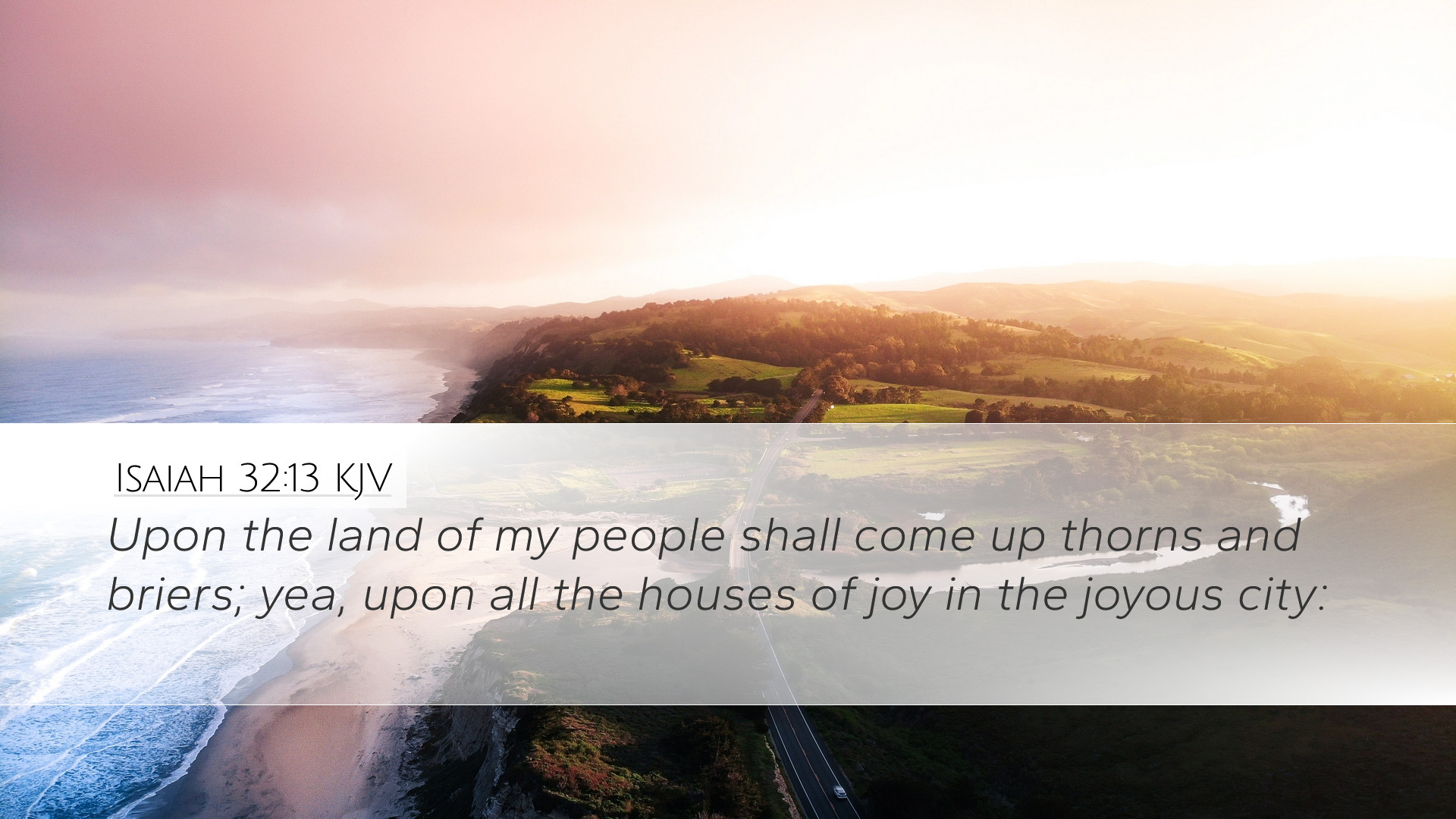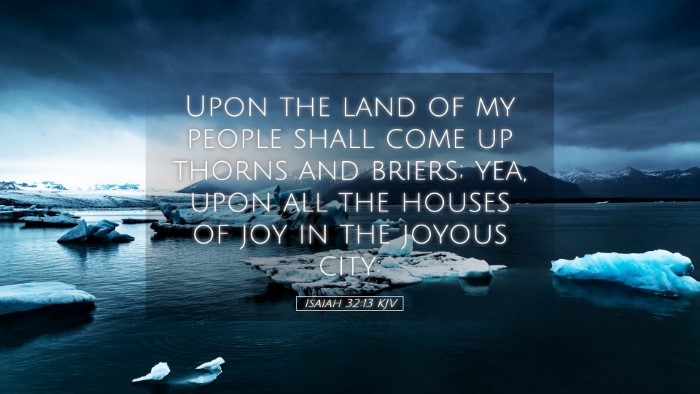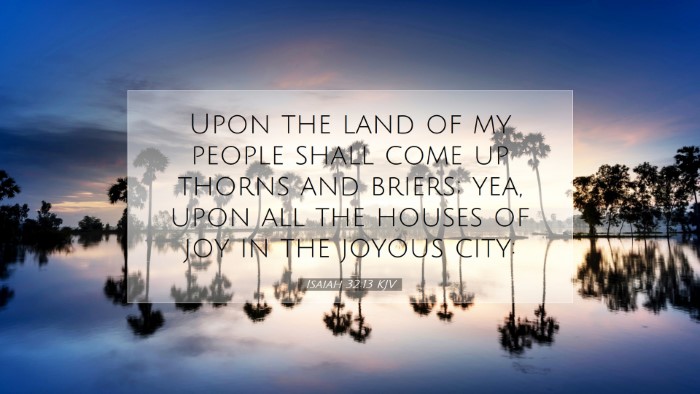Isaiah 32:13 Commentary
Isaiah 32:13 states: "Upon the land of my people shall come up thorns and briers; yea, upon all the houses of joy in the joyous city." This verse serves as a profound statement on the consequences of spiritual decline and the judgment that follows. Insights from various commentaries will help illuminate its meaning.
Contextual Background
The Book of Isaiah was written during a tumultuous period in Israel’s history, marked by spiritual apathy and moral decay. The prophet Isaiah, as a voice of God, highlights the stark contrasts between the expected blessings for God’s people and the realities of judgment for their disobedience.
Analysis of Key Themes
Judgment and Consequences
Isaiah 32:13 emphasizes the inevitable consequences of sin. The imagery of thorns and briers signifies judgment and desolation. Albert Barnes notes that these symbols represent the loss of spiritual blessings and the hardships that ensue when a society turns away from God.
The State of God’s People
Matthew Henry emphasizes that the land of my people indicates a divine connection to the people of Israel. Their land, once a place of divine favor, becomes a scene of desolation due to their unfaithfulness. The mention of houses of joy signifies a once-happy community now facing impending judgment.
Symbolism of Thorns and Briers
According to Adam Clarke, thorns and briers are often used in Scripture as symbols of retribution. Here, they illustrate the curse that follows disobedience, reminding readers of Genesis 3:18, where thorns and thistles are part of the curse on the ground resulting from sin. Thus, the imagery evokes the seriousness of God's judgment.
Implications for the Faithful
For pastors, students, and theologians, this verse serves as a reminder of the importance of maintaining righteousness. The warnings in Isaiah are timeless—they apply not only to ancient Israel but also to contemporary communities who may stray from God’s paths.
Call to Repentance
Isaiah’s message is not merely one of despair but also a call to repentance. Acknowledging the realities of sin and judgment can lead to restoration. Matthew Henry suggests that recognizing the emptiness of worldly joy, as represented by the joyous city, can turn hearts back to God.
Hope Amidst Judgment
Despite the detailed outline of judgment, hope is intricately woven into the fabric of Isaiah’s prophecies. Adam Clarke points out that the context surrounding this verse ultimately leads to glimpses of restoration and future blessings for those who turn back to God with sincere hearts.
The Role of the Prophet
Isaiah as a prophet serves a dual role: a messenger of judgment but also of hope. This reflects the broader theme of prophetic literature, where admonishment and restoration coexist. For students and scholars, understanding this duality enriches the interpretation of prophetic texts.
Warnings for Today’s Church
This verse also evokes a call to the modern church to reflect on its practices and alignment with God's will. Are the contemporary houses of joy in danger of facing similar consequences? Leaders and congregations are encouraged to seek God earnestly and avoid the pitfalls of complacency.
Conclusion
In summarizing Isaiah 32:13, it becomes clear that the thorns and briers represent the dire consequences of abandoning God's covenant. However, the message is not without hope. Through repentance and a return to righteousness, restoration is possible. This commentary serves as a rich resource for pastors, students, and theologians as they explore the depths of God's Word and its application for today.


